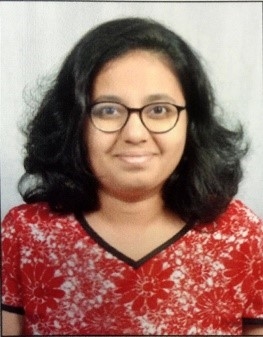GP Short Notes # 324, 8 April 2020
 Rashmi Ramesh
Rashmi Ramesh In the news
In late March, an 87-year old indigenous woman from the Borari community succumbed to the virus. The previous week saw another case, where a medical worker from the Kokama community tested positive after coming in contact with an infected doctor. These are among the first known cases of COVID-19 among the native tribes in Brazil.
The indigenous communities across the globe are at a high risk of contracting the virus- whether it is in Brazil, Peru, India, Indonesia, or Canada.
Issues at large
The corona-curve in China has flattened after around four months to the extent of not reporting a locally transmitted case in late March. After witnessing the peak, it seems that the cases in Italy and Spain, have reached a stabilising point. The concern now is to reduce the number of new cases to the bare minimum.
Amidst all this, is little attention on the status of COVID-19 in the native lands. Governments, as well as the media, are excessively focusing on the mainstream population, but the indigenous people are at a higher risk comparatively. Their history of the fight with pandemics has been disastrous. The American plagues of the 16th century brought to the continent by the Europeans caused the collapse of the Inca and Aztec civilizations.
Statistics point that around 90 per cent of the indigenous population of the Western hemisphere, was annihilated. The measles outbreak in the 1960s killed a large section of the population of the Yanomami community living in the Brazil-Venezuela border. It is, therefore, more important to focus on the health of the native people in the COVID-19 crisis.
In perspective
First, forests are intruded by illegal hunters, mining companies and their workers, and missionaries. This is common across all the native lands, and it makes them vulnerable to the diseases carried by these agents. In Brazil, Bolsonaro's policy of exploiting the Amazons, and the activities of the missionaries, has encouraged more human activity, thereby exposing them to the Coronavirus.
Second, the native communities have been taking proactive steps to stop the spread of the virus. The leaders of the indigenous community organizations have been educating their people regarding better sanitization and isolation. Communities have now blocked the entry of outsiders into their lands, and they have stopped moving to the places with tourist activities, the potential risk-zones in the forests. They are also using traditional medicines to sustain immunity. It seems that subsistence living, self-reliance for food, and traditional knowledge is helping the indigenous people to put up a fight in this hour of crisis. However, their trade has been badly hit, with fewer opportunities to sell their handmade products and vegetables.
Third, countries like Bolivia, Peru, India, Ecuador, Kenya, so on, have taken measures to stop the movement towards the native lands. In terms of the medical facilities, few health officials are monitoring the situation in their respective countries, but their numbers are considerably low. Medical professionals cannot reach all places where the indigenous communities live. The rate of testing for the virus is low, and therefore, complete information about the communities infected, the numbers, the rate of the spread and the casualties remains unknown. In some cases, the medical professionals themselves can be potential carriers of the virus. Additionally, they are also vulnerable to the virus when they are forced to go to a hospital for any other kind of treatments.
Fourth, COVID-19 has ensured that violent conflicts in the Indian sub-continent have reduced to a large extent. The Naxal movement and the insurgencies have taken a backseat during the crisis. The Naxal fighters called for a temporary ceasefire, to enable the government officials to reach remote tribal-dominated areas and provide medical facilities and essential supplies.
Fifth, the biggest fear definitely, is the washout of native culture in a few places. Their history of a fight with pandemics has been disastrous. The measles outbreak in the 1960s killed a large section of the population of the Yanomami community living in the Brazil-Venezuela border. This fear now has gripped the Indian authorities, since the virus spread to the Andaman and Nicobar archipelago. Among the six tribes native to the islands, the Sentinelese, inhabiting the North Sentinel Island of the archipelago is at greater risk, as they are untouched by the mainstream civilization. The only measure, the government can take, in this case, is to provide external protection by blocking the entry points into the island.
While the world is worried about the effects of Coronavirus, there is a section of the population that is not even aware of this disease and even if they know, cannot get much help.